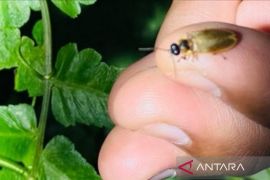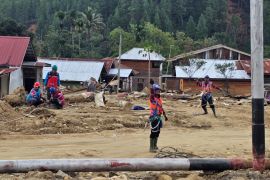Jakarta (Antara Bali) - The mass death of fish, found washed ashore North Jakartas Ancol Dream Land beach, was due to a population boom of the Coscinodiscus spp. species of phytoplankton, noted the Indonesian Institute of Sciences (LIPI).
In a press statement here on Wednesday, the Oceanic Research Center of LIPI said the phytoplankton population had significantly reduced the oxygen content in the water.
According to LIPI, based on tests conducted on the water samples taken from three locations on Ancol beach on Tuesday, the oxygen content in the water was found to be very low at only 0.765 milliliters per liter (ml/L), while the normal oxygen level is about four to five ml/L.
The low content of dissolved oxygen is the cause of the mass death of fish at Ancol beach. Based on the observation, the density of phytoplankton was recorded at one to two million cells per liter of water.
Coscinodiscus spp. is one of the species that is actually not dangerous, but since it has a large number of cells, it absorbs a significant amount of oxygen, thereby resulting in a drop in the levels of dissolved oxygen in the water.
Thousands of dead fish were found washed up along the Ancol beach early on Monday.
The fish species found dead, included milk fish (bandeng), mullet fish, snapper fish, and the so-called kentang-kentang fish.(WDY)









